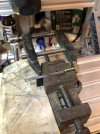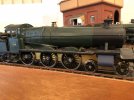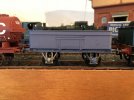Well, I am peeved. I set to, to do the slidebars before 'erself's train gets in, and it did not quite go according to plan, but no damage done, so on with the job... except, the damn miller motor drive has packed up again

Unfortunately, I haven't yet got the first one fixed, so now I have two GRBL controllers that are hors service

This is more than a bit of a PITA as it prevents progress on the panniers and the manor. I shall have to order some suitable MOSFETs and practice my soldering.
It is either the el cheapo miller's motor that is a bit demanding, or some bizarre glitch. I'm sure that this is not expected. Given there is no speed control (there is a PWM output, so perhaps I should...) I cannot imagine why it packs up like this. Damn irritating.

I shall go and put the bins out and the dinner on.







 Unfortunately, I haven't yet got the first one fixed, so now I have two GRBL controllers that are hors service
Unfortunately, I haven't yet got the first one fixed, so now I have two GRBL controllers that are hors service  I shall go and put the bins out and the dinner on.
I shall go and put the bins out and the dinner on.